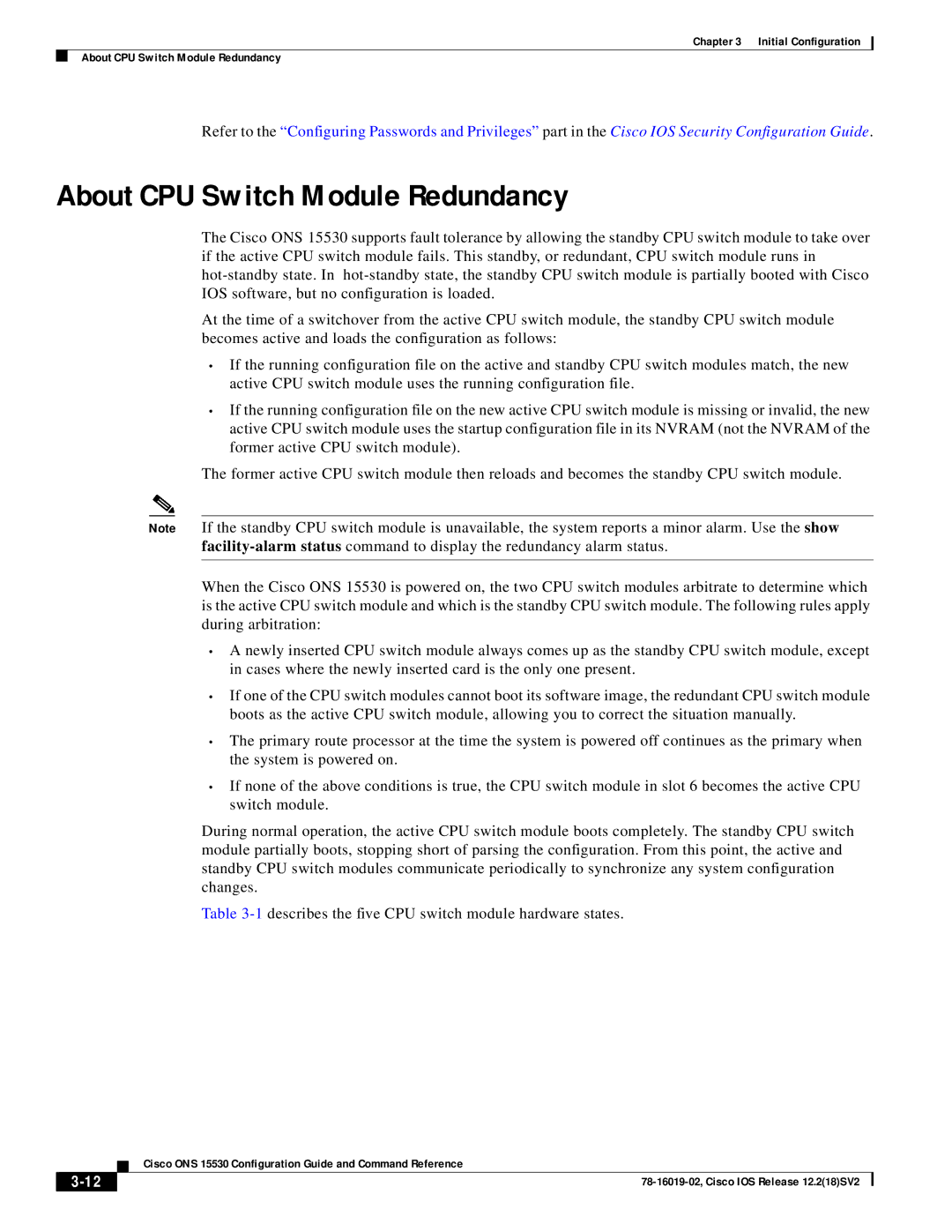
Chapter 3 Initial Configuration
About CPU Switch Module Redundancy
Refer to the “Configuring Passwords and Privileges” part in the Cisco IOS Security Configuration Guide.
About CPU Switch Module Redundancy
The Cisco ONS 15530 supports fault tolerance by allowing the standby CPU switch module to take over if the active CPU switch module fails. This standby, or redundant, CPU switch module runs in
At the time of a switchover from the active CPU switch module, the standby CPU switch module becomes active and loads the configuration as follows:
•If the running configuration file on the active and standby CPU switch modules match, the new active CPU switch module uses the running configuration file.
•If the running configuration file on the new active CPU switch module is missing or invalid, the new active CPU switch module uses the startup configuration file in its NVRAM (not the NVRAM of the former active CPU switch module).
The former active CPU switch module then reloads and becomes the standby CPU switch module.
Note If the standby CPU switch module is unavailable, the system reports a minor alarm. Use the show
When the Cisco ONS 15530 is powered on, the two CPU switch modules arbitrate to determine which is the active CPU switch module and which is the standby CPU switch module. The following rules apply during arbitration:
•A newly inserted CPU switch module always comes up as the standby CPU switch module, except in cases where the newly inserted card is the only one present.
•If one of the CPU switch modules cannot boot its software image, the redundant CPU switch module boots as the active CPU switch module, allowing you to correct the situation manually.
•The primary route processor at the time the system is powered off continues as the primary when the system is powered on.
•If none of the above conditions is true, the CPU switch module in slot 6 becomes the active CPU switch module.
During normal operation, the active CPU switch module boots completely. The standby CPU switch module partially boots, stopping short of parsing the configuration. From this point, the active and standby CPU switch modules communicate periodically to synchronize any system configuration changes.
Table
| Cisco ONS 15530 Configuration Guide and Command Reference |
